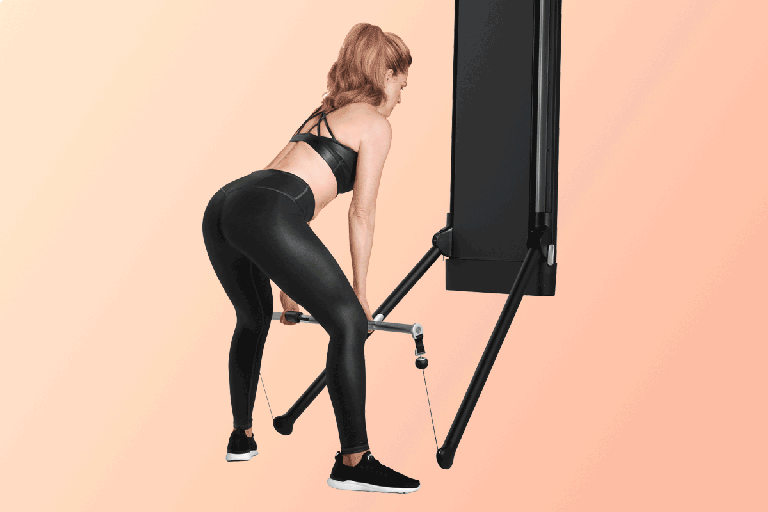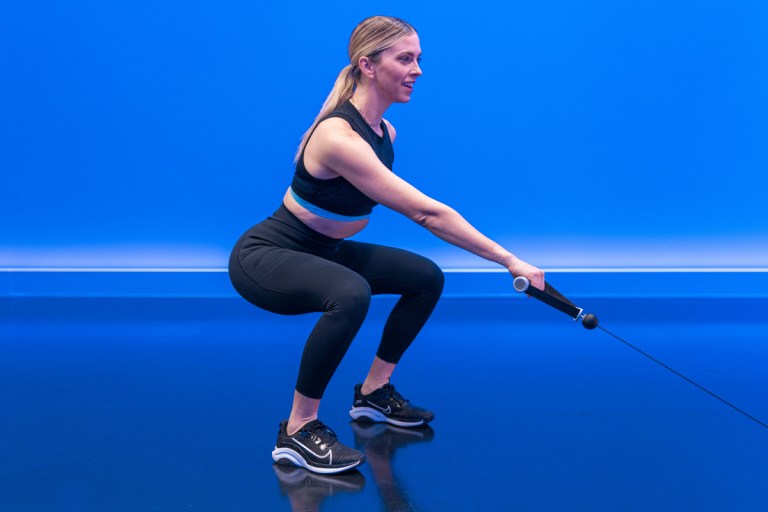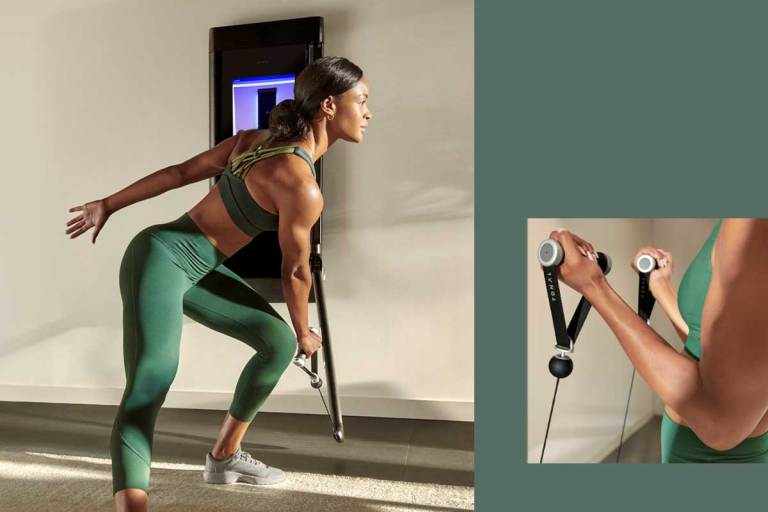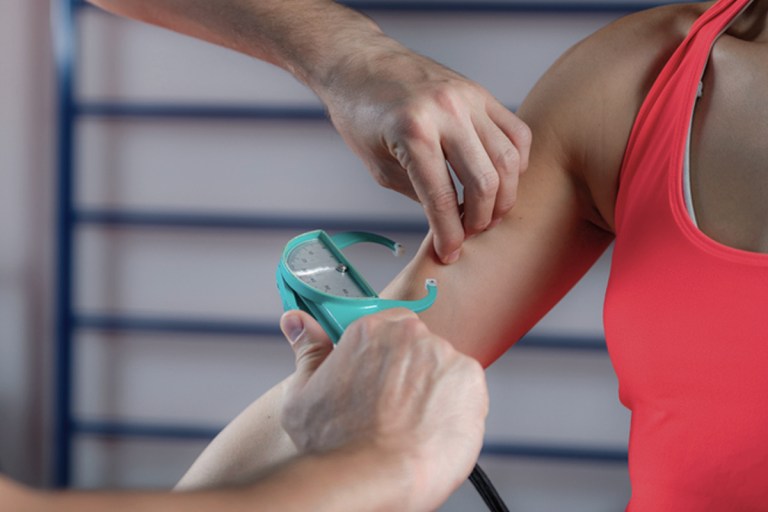Can Soleus Pushups Boost Your Metabolism While You Sit?
A new study shows this little movement could have big benefits.

Although extensive research has linked hours spent sitting with increased all-cause mortality, for many of us, a sedentary lifestyle may be unavoidable due to our jobs or other responsibilities.
It’s not surprising then that a recent study has been attracting a lot of attention for showing the major health benefits of a simple exercise called the soleus pushup that you can do while sitting at your desk or on the couch.
“Soleus pushup” is a term coined by the study’s authors to describe what’s essentially a seated calf raise. In the study, researchers compared sedentary participants to those who continually performed soleus pushups. They found that the soleus pushup group experienced an increase in oxidative metabolic rate (the rate at which the body uses oxygen to convert fat or carbohydrates into energy) and a quicker decrease in blood glucose after ingesting a glucose drink.
While it’s an intriguing discovery, it doesn’t mean you should start replacing all your workouts with seated calf raises. Here’s what you need to know about soleus pushups and whether they deserve a spot in your routine.
What Is a Soleus Pushup?
Your calf is made up of two major muscles, the soleus and the gastrocnemius, with the soleus being the smaller of the two. Jenna Moore, a certified strength and conditioning coach and Programming Specialist at Tonal, explains that the gastrocnemius, which is composed mainly of fast-twitch muscle fibers, assists in explosive movements such as sprinting, jumping, and plyometrics. In contrast, the soleus consists of fatigue-resistant, slow-twitch muscle fibers that allow you to stand, walk, and run for long periods of time.
While standing calf raises target the gastrocnemius, seated calf raises, or soleus pushups, are more effective at isolating the soleus.
Here’s how to do a soleus pushup: Sit in a chair with your knees bent and your feet flat on the floor. Push your toes into the ground as you raise your heels. Lower your heels and repeat.

Can Soleus Pushups Really Boost Your Metabolism?
Because the soleus pushup has a relatively low energy expenditure—it uses a muscle that makes up only one percent of your total body mass and burns half as many calories per minute as walking—researchers were impressed by how much it boosted metabolism and improved glucose regulation.
In the study, participants who continually performed soleus pushups saw elevated whole-body metabolism levels and a 52 percent improvement in blood sugar regulation after drinking a glucose drink.
It sounds like a quick fix, but the participants were doing a lot of soleus pushups. In the study, they spent up to 270 minutes (that’s 4.5 hours) raising and lowering their heels with only brief breaks. While the participants didn’t experience any muscle soreness during the experiment—likely due to the slow-twitch, fatigue-resistant nature of the soleus muscle.
“The soleus’ lower-than-normal reliance on glycogen helps it work for hours effortlessly without fatiguing during this type of muscle activity, because there is a definite limit to muscular endurance caused by glycogen depletion,” the study’s lead author Marc Hamilton, professor of Health and Human Performance at the University of Houston, said in a press release.
In other words, while you’ll burn out your energy stores more quickly running or lifting weights, the soleus pushup requires less energy to do consistently. That’s good news if you’re looking for a very low-intensity, low-impact activity that’ll increase your metabolism and benefit your health, as long as you’re willing to do it for hours at a time. The study did show an improvement in glucose response after one hour of soleus pushups, but it’s unclear what the effect would be if you stopped after 10 or 30 minutes.
For those who are unable to exercise due to illness or injury, though, Moore explains that committing to the soleus pushup may be a solid option for boosting metabolism and regulating glucose. If you’re stuck sitting for an extended period of time in a work meeting or long plane ride, she says doing a few minutes of soleus pushups every hour could improve circulation and potentially prevent blood clots.
Do Soleus Pushups Build Calf Strength?
While soleus pushups may be effective in increasing metabolism and improving glucose regulation, they’re not the most efficient strategy for building stronger calves. “You don’t have overload, and you don’t have external load,” explains Tonal coach Kristina Centenari, a certified personal trainer and accomplished runner and triathlete. “So it’s probably not going to be the most optimal strength-training tool.”
If you’re looking to build bigger calf muscles or improve your performance in activities like running or plyometrics, Centenari recommends trying these exercises instead.
Resisted Calf Raise

Why it Works: When you’re working a fast-twitch muscle like the gastrocnemius that’s used for pushing off the ground, lifting heavier resistance helps build power and speed.
How to Do it: Stand facing Tonal and take a handle in each hand with your arms at your sides. Keeping your arms relaxed, press the balls of your feet into the floor, lifting up your heels and squeezing your calves. With control, lower yourself to the floor and repeat.
Bent Knee Calf Raise

Why it Works: Like a seated calf raise, this bodyweight move targets the soleus because it’s done with knees bent. Because you’re doing the exercise while holding an isometric squat, you’re also getting the benefit of burning out your glutes, hamstrings, and quads in the process.
How to Do it: With control, lift your heels off the floor, staying in the squat position and pressing the balls of the feet into the floor as if you’re about to walk on your tippy toes. Lower the heels to the floor and repeat.
The Bottom Line
Early research indicates that soleus pushups, or seated calf raises, can have a big impact on metabolism and glucose regulation—if you’re willing to do them for hours each day. It’s a low-risk, low-cost exercise that could counteract the negative effects of a sedentary lifestyle.
The soleus pushup routine in this study may be a promising option for those who are unable to do traditional exercise, but it doesn’t offer the other benefits of a standard workout including increased muscle strength, fat loss, or improvements in overall fitness and athletic performance.



